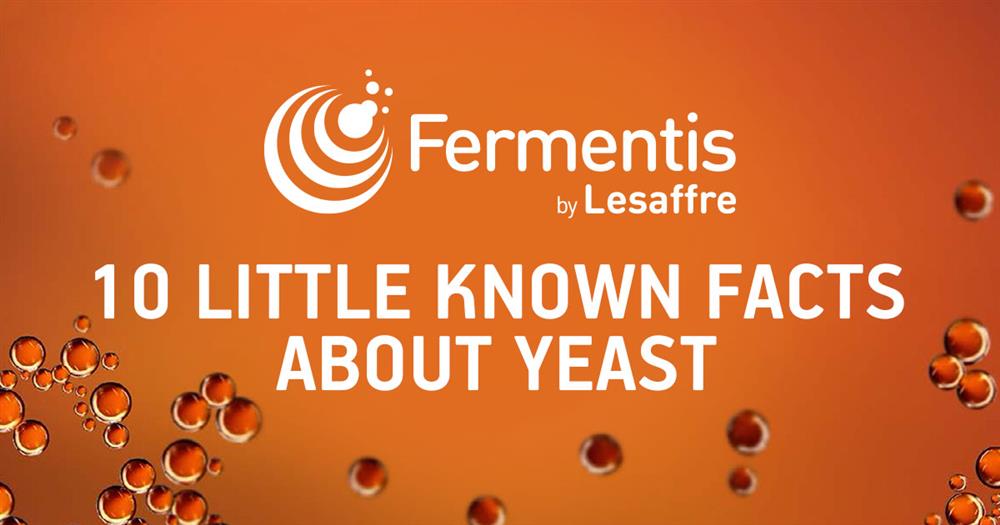10 Little Known Facts About Yeast
Apr 26, 2021

There’s a lot to know about yeast, and Fermentis is here to tell you all about it! Here’s the top ten facts you may not have known about yeast, brought to you by Fermentis Academy.
- Did you know that lagers do not necessarily need to be fermented low and slow? Applied Research conducted by the Fermentis R&D team have found that if you use the right yeast strain, you can ferment a clean lager warmer and faster than you think.
- The expression of flavor and aroma character in your final beer is made possible by the individual yeast strain. Different strains are capable of participating in the creation of several different chemical compounds that account for most of the flavor and aroma expressed in your beer.
- Did you know that pitching SafYeast™ directly into the fermenter has been found to have no impact on viability and vitality? The Fermentis R&D team is dedicated to extensive trials to prove these claims. After being taken through unparalleled and rigorous testing, the yeast strains that show high and preserved viability, maintains fermentation performance and consistent flavor and aroma profiles in order to earn its E2U™certification. Look for the label E2U™!
- The genetics of different yeast strains are for a brewer what color pallets are for a painter . To highlight the diversity of flavor and aroma characteristics they create, our main commercial yeast strains have been tested in the same standard conditions, with the lowest possible impact of other ingredients – in the most neutral conditions.
- Did you know that yeast is your best tool for reducing diacetyl? Diacetyl is a common fermentation byproduct giving a “buttery” off flavor. It is formed during fermentation and finally reduced by a healthy yeast. All of Fermentis’ strains are efficient in reducing diacetyl.
- Yeasts used for fermentation in beer are traditionally classified as ale, lager, or ‘wild.’ By far, most brewer’s yeasts are of the genus Saccharomyces. Saccharomyces is used to make both ales and lagers, the most popular varieties of beers. For reliability, availability and ease, it’s number one in both fermenting beer and breadmaking. Wild yeast, on the other hand, are Non-Saccharomyces. Wild yeast, in general, creates more “funky” flavors, often skewing fruitier than the traditional Saccharomyces flavors.
- Did you know yeast works like a biological “factory”? As attenuation increases in the fermenter, so does assimilation of sugars that allows the creation of ethanol, CO2 and aromatics.
- Fruity flavors can also be created by certain yeast strains. Thanks to Fermentis research on their strains – you can steer your fermentation conditions to guide your strain into the production of fruity esters. Check out the free Fermentis App for great fermentation tools and product information.
- Did you know that the shelf life of SafYeast™ (aka Fermentis Yeast) is 2 years from the packaging date? Due to the lack of free water molecules in SafYeast™ (a.k.a. Fermentis ADY), Fermentis assures optimum storage in its original packaging for up to 3 years, when stored at an ambient temperature no higher than 59°F (15°C). You can store it safely for 3 years if kept at a temperature no higher than 50°F (10°C).
- All Fermentis beer yeast strains are gluten-free and GMO-free. Fermentis does not use any gluten in the beer yeast products– all of the raw materials of these beer yeasts are Gluten Free. Also, Fermentis active dry yeasts do not contain any Genetically Modified Organisms (GMO), as defined by 2001/18/CE European directive dated 12 March 2001.
Discover more about Fermentis yeasts on their website by clicking here!
Still curious about Fermentis yeasts, like SafSour™ and SafBrew™? These webinars below have all the answers to your questions!